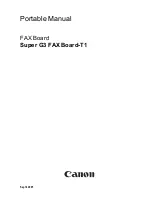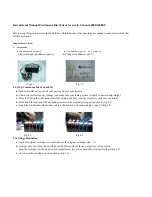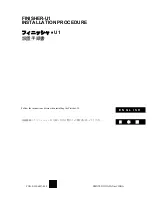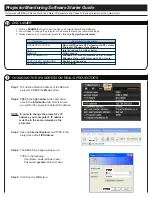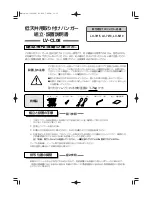
7 APPLICATION INSTRUCTIONS
7.8 String Processing Instructions
657
7
■
Operation of when SM705 (Number of conversion digits selection) is off
Hexadecimal ASCII data is stored in a fixed number of digits (8 digits) in (d) to (d)+3.
• The operation result to be stored in the device specified by (d) is processed as a 8-digit hexadecimal number. Therefore, 0
at the left side of the effective number of digits is processed as "0". (Zero padding)
Ex.
When 03AC625EH is stored in the device specified by (s)
■
Operation of when SM705 (Number of conversion digits selection) is on
Hexadecimal ASCII data for the number of digits (up to 8 digits) without the leftmost "0" in the effective digits is stored right-
justified in (d).
The following figures show an example of a value of (s) and a value stored in (d).
• When the number of digits is less than the maximum number of digits (8 digits), 00H is stored in the end of the string
regardless of the status (on/off) of SM701 (Number of output characters selection). If the end of the string is the lower byte,
00H is also stored in the upper byte.
• When the number of digits is equal to the maximum number of digits (8 digits), 00H is stored in (d)+4 when SM701 (Number
of output characters selection) is off. (d)+4 does not change if SM701 (Number of output characters selection) is on.
ASCII
: ASCII code (
th digit)
(1): 00H is stored in (d)+4 when SM701 (Number of output characters selection) is off. When it is on, the value in (d)+3 remains unchanged.
Value of (s)
Data of (d) to (d)+3
Value of (s)
Data of (d) to (d)+3
• 0H to FH
• The upper byte of (d) is filled with 00H.
• (d)+1 and later remain unchanged.
• 10H to FFH
• (d)+1 is filled with 00H.
• (d)+2 and later remain unchanged.
• 1000000H to
FFFFFFFH
• The upper byte of (d)+3 is filled with 00H.
• 10000000H to
FFFFFFFFH
• (1): (d)+4 is filled with 00H when SM701 (Number of
output characters selection) is off. (d)+4 does not
change if SM701 (Number of output characters
selection) is on.
ASCII
: ASCII code (
th digit)
b31
b15
b16
b0
(s)+1
(s)
BIN 32bit
∙∙∙
∙∙∙
(d)+1
(d)+2
(d)+3
(d)+4
(d)
b15
b0
∙∙∙
∙∙∙
b7
b8
ASCII 8
ASCII 6
ASCII 4
ASCII 2
ASCII 7
ASCII 5
ASCII 3
ASCII 1
00H
(1)
(d)
(d)+1
(d)+2
(d)+3
(d)+4
b15
b0
∙∙∙
∙∙∙
b7
b8
(s)+1
(s)
0 3 A C
6 2 5 EH
30H (0)
43H (C)
33H (3)
41H (A)
36H (6)
32H (2)
45H (E)
35H (5)
00H
(d)+1
(d)+2
(d)+3
(d)
b15
b0
∙∙∙
∙∙∙
b7
b8
ASCII 1
00H
(d)+1
(d)+2
(d)+3
(d)
b15
b0
∙∙∙
∙∙∙
b7
b8
ASCII 2
ASCII 1
00H
(d)+1
(d)+2
(d)+3
(d)
b15
b0
∙∙∙
∙∙∙
b7
b8
ASCII 6
ASCII 4
ASCII 2
ASCII 7
ASCII 5
ASCII 3
ASCII 1
00H
(d)+1
(d)+2
(d)+3
(d)+4
(d)
b15
b0
∙∙∙
∙∙∙
b7
b8
ASCII 8
ASCII 6
ASCII 4
ASCII 2
ASCII 7
ASCII 5
ASCII 3
ASCII 1
00H
(1)
Summary of Contents for MELSEC iQ-R Series
Page 1: ...MELSEC iQ R Programming Manual Instructions Standard Functions Function Blocks ...
Page 2: ......
Page 24: ...22 INDEX 2092 INSTRUCTION INDEX 2093 REVISIONS 2104 WARRANTY 2105 TRADEMARKS 2106 ...
Page 34: ...32 MEMO ...
Page 35: ...33 PART 1 PART 1 OVERVIEW This part consists of the following chapter 1 OVERVIEW ...
Page 68: ...66 1 OVERVIEW 1 5 Precautions on Programming MEMO ...
Page 1448: ...1446 14 REDUNDANT SYSTEM INSTRUCTIONS 14 2 Disabling Enabling System Switching MEMO ...
Page 1972: ...1970 33 TIME DATA TYPE FUNCTIONS 33 4 Division MEMO ...
Page 2067: ...APPX Appendix 5 PID Control Program Examples 2065 A 252 Set PID control data for loop 2 ...
Page 2109: ......
































